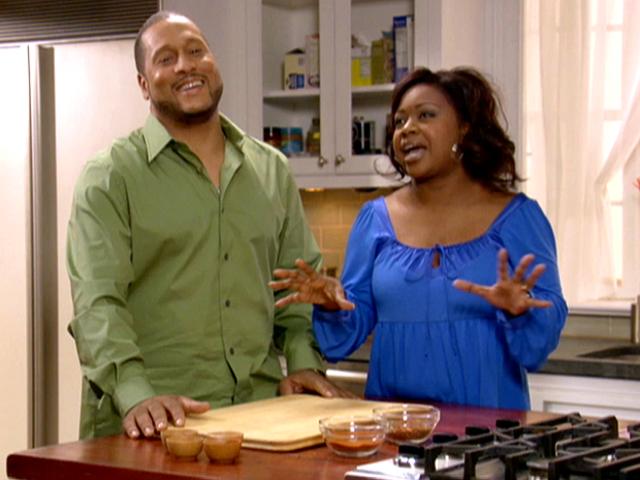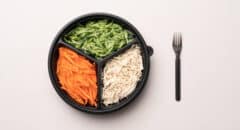 I don't know about y'all but Gina Neely from the highly popular "Down Home With The Neely's" cooking show is looking good!
I don't know about y'all but Gina Neely from the highly popular "Down Home With The Neely's" cooking show is looking good!
“When you’re happy and healthy, you can let your inner glow out.” says Gina. And from the looks of it, she's so right!
Back in 2013, a year before former Food Network star Gina Neely divorced her now ex-husband (and Down Home with the Neelys costar) Pat, Gina realized she was no longer comfortable with her size 8 body and embarked on a “25 lbs. in 12 weeks” challenge to change her body for good.
The couple—high school sweethearts who rose to fame on the Food Network’s Down Home with the Neelys—split in 2014 after over 20 years together.
She now has lost over 50 pounds after her divorce and has been able to keep it off.

"My motivation to lose weight was due to my annual [doctor’s] visit and my cholesterol was a little high and I wanted to make some changes to fix it," explains Gina. "How ironic that the George Foreman spokesperson opportunity came along? So it was just more of a validation for me to move in a healthier direction."
"As a woman, we are always being judged or judging ourselves. Sometimes it can be emotional eating from stress, what society says is acceptable or just life in general. That’s why it’s so important to create a healthy lifestyle for yourself.

When asked what she specifically did to lose the weight, Gina broke it down.
"The first step you have to take is to get your mind in sync with the idea of change. Then you clean the refrigerator out, create meals plans and make exercising an appointment. Try to stay consistent and keep with the plan. Remember that you are human, so it’s OK to give yourself a break every now and then."
Another one of the biggest tools Gina used to lose weight and keep it off is portion control.
Portion distortion is becoming a problem everywhere. No matter how healthy it is, eating too much food goes against healthy eating guidelines. Food portions have gotten way out of control, particularly in the United States. When eating out, you are almost guaranteed to be served at least twice the calories you need for that meal. Most food portions are now from two to eight times larger than the standard recommended serving sizes according to the USDA's dietary guidelines.

Unfortunately, we have also grown up with admonishments from our parents to “clean our plates” and to never waste food since there are hungry people elsewhere in the world. However, obesity is caused by eating more calories than your body needs. Cheap food and “Super-sized” portions characterize the chain restaurant culture, and we tend to eat whatever we are served regardless of how hungry we are.
Selecting the right foods also means choosing portions that are proper serving sizes. The terms "portion" and "serving" are often used interchangeably, but they don't mean the same thing. A "portion" is the amount of food you choose to eat for meals or snacks (like a plateful of pasta or a handful of raisins). In comparison a "serving" is the amount of food that experts recommend you eat (like 1 cup of milk or 1 ounce of bread). Servings are listed on a food's nutrition facts label too. When choosing your portion, try to make it as close as possible to these recommended serving sizes.
1 cup = your fist or a baseball
- Beverages
- Cereal
- Casseroles
- Soups
- Fresh fruit
- Salads
½ cup = cupped hand or a tennis ball
-
- Pasta
- Rice
- Beans
- Potatoes...
- Cooked vegetables
- Pudding
- Ice cream
3 ounces = palm (without fingers) or a deck of cards
- meat
- fish
1 tablespoon = thumb or an ice cube
- Salad dressing
- Peanut butter
- Sour cream
- cheese
1 teaspoon = thumb tip or one die
- Butter
- Mayonnaise
- Oil
Buy snack foods in small packages, or divide up larger packaged foods into smaller containers. Studies at the University of Illinois, Urbana-Champaign, showed that when people buy large size bags of almost any food, they tend to eat more at one sitting, which can increase what they eat by up to 43%!
Once you believe in the power of nutrition and the benefits of healthy eating, the next step is to get to familiarize yourself with nutrition data so you know the foods that support good health. Then you'll be able to come up with a healthy eating plan that meets the dietary guidelines for maintaining good health, as well as catering to your personal tastes while meeting your nutritional needs.
Now that you are aware of some of the facts about healthy eating, you know that there is no additive or fortifier that protects our health and our waistline like the real thing: real, whole foods like fruits, vegetables, whole grains, and lean meats. If we focus on real food and exercise, and lighten up on the snacks and correct the portion distortion, we'll have a good chance of beating the obesity epidemic ourselves, and helping our kids beat it too. Look at our healthy eating tips to get some ideas as to how to use these healthy eating guidelines in your daily life.









